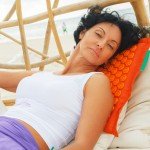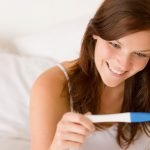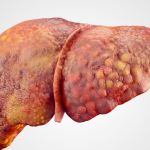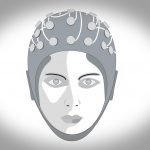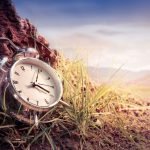Naturopathic Treatments for Traumatic Brain Injury
Alicia Gonzalez, ND
My saga with brain injuries began when a soccer teammate fell during a game and suffered a traumatic brain injury (TBI). He was rushed to the nearest trauma center and received top-notch care in the ER and ICU. Unfortunately, once he was discharged he was at a loss for what to do. He continued to suffer headaches, memory loss, depression, confusion, fatigue and a myriad of other symptoms. He was told to take ibuprofen for the headaches and that he could get a referral for physical and/or speech therapy. That is not the kind of help he was looking for. I had experience treating seizures and other neurological disorders, so I asked him to visit my clinic to see how I could help.
Each year in America, 1.5 million people suffer TBIs (Viant et al., 2005). Of that number, 50,000 to 100,000 have prolonged problems that will affect their ability to work and/or their daily lives (Johnson, 1998). More than 5 million Americans are living with a disability related to TBI. Most are from car accidents or sports injuries. Many Iraq war veterans are coming home after having suffered a TBI. Close to 100,000 Iraq war veterans are being taken care of by their parents, according to the Wounded Warrior Project (Solomon, 2008). Fifty thousand deaths in the U.S. occur due to TBIs each year (Viant et al., 2005).
The Science Behind TBIs
It is estimated that there are about 100 billion neurons in the brain and spinal cord. As we all know, neurons are responsible for receiving, processing and delivering neurotransmitters such as dopamine, norepinephrine and epinephrine from the brain to other parts of the body.
In the brain, only the left hemisphere can articulate what is seen by either the left or right hemisphere, because language is centered in the left hemisphere. The right hemisphere seems to be concerned with the appreciation of spatial aspects of all sensory input, especially from the left side. The right hemisphere is able to make sense out of sensory information “received” from the left half, including information coming from the body. And, the right hemisphere has the ability to recognize faces.
According to clinical neuropsychologist Glen Johnson, “People who have an injury to the right side of the brain ‘don’t put things together’ and fail to process important information. As a result, they often develop a denial syndrome and say, ‘there’s nothing wrong with me.’” “People with left hemisphere injuries tend to be more depressed, have more organizational problems and have problems using language” (Johnson, 1998).
In the past, head injuries were commonly divided into two categories: penetrating (open) or closed (Shea, 2006). Fracture of the skull results in an open head injury. A penetrating head injury results when an object pierces the skull. When an object pierces the brain, it can mean irreparable damage or no change at all, depending on where the object is located. Closed head injuries occur when the skull is not broken. Many people commonly think that closed head injuries do less damage and, therefore, the person has a better prognosis. Quite the opposite is true. In closed head injuries, the force of a blast or a blow causes the brain to be propelled against the skull. Pressure then builds up and damages brain tissue. When an individual’s skull is fractured, it can actually be a blessing, as the excess pressure relieved from the fracture can prevent the brain from experiencing further damage due to increased intracranial pressure.
Bleeding and the subsequent bruise formation, tearing and swelling are involved in causing injury to the brain (Johnson, 1998). Imagine that a person is involved in a car accident where he hits his forehead against the steering wheel. His brain gets slammed against the frontal bone and then, when his head snaps backwards, the brain gets slammed against the occipital bone. This is a contrecoup injury that results in tearing of the axons and blood vessels, bleeding, bruising and swelling. Blood pressing on the brain causes damage to the axons, which can affect signaling to the heart and lungs, which can cause death. If the person lives, any number of TBI symptoms can develop.
Injuries to the frontal lobe can cause more symptoms than injuries to the occipital lobe. The frontal area of the brain is not as stable. The frontal lobe controls many aspects of memory, behavior and motor function, and severe damage can wipe out a patient’s ability to solve problems, plan, speak or control impulses (Shea, 2006). According to Dr. Warren Lux, a neurologist at Walter Reed, people with TBIs to the frontal lobe often have trouble controlling sexual impulses, and can become very violent (Shea, 2006).
The effects of TBI on brain chemistry and metabolism have been studied with Proton Magnetic Resonance Spectroscopy. Altered brain metabolites show evidence of oxidative stress, membrane disruption and neuronal injury secondary to diffuse axonal injury (Shutter et al., 2006). In addition, studies show that head injury victims tend to have neurotoxic zinc levels in the weeks following their accidents, resulting in decreased cognitive function (Aquilar-Alonso et al., 2008; Hellmich, 2008).
Naturopathic Treatment for TBI
Axonal repair after head injury was once believed to be impossible. New research is showing hope, but regeneration can be excruciatingly slow. Repair is also more successful if rehabilitation is initiated as soon as possible after the injury has been sustained. Many naturopathic treatments help to reverse the effects of the decreased brain metabolites just discussed and to protect it from free-radical damage that occurs secondary to the inflammatory response to TBI.
Bacopa monniera. Bacopa monniera, also known as Brahmi, has been traditionally used in Ayurvedic medicine as a brain tonic to improve memory, learning and concentration, and also to treat anxiety and epilepsy.
Research on Bacopa‘s ability to enhance cognitive function has focused on its antioxidant properties, constituents and their mechanisms of action (Tripathy et al., 1996).
“The triterpenoid saponins and their bacosides are responsible for Bacopa’s ability to enhance nerve impulse transmission. The bacosides aid in repair of damaged neurons by enhancing kinase activity, neuronal synthesis and restoration of synaptic activity, and, ultimately, nerve impulse transmission” (Altern. Med. Rev., 2004). Bacosides have been shown to modulate antioxidant activity in the brain, due in large part to its actions on superoxide dismutase and cytochrome P450 enzymes (Chowdhuri et al., 2002).
Healthy individuals from age 18 years old to seniors have undergone research to assess the cognitive enhancing effects of Bacopa. Two studies out of Australia show that the use of Bacopa monniera for more than 12 weeks helps to improve cognitive function in healthy adults. In one of the studies, participants were given 300mg Bacopa monniera extract standardized to 55% combined bacosides A and B. Improvement occurred with verbal learning, memory and speed of learning (Roodenrys et al., 2002; Stough et al., 2001). Glycerophosphocholine (GPC) is an orthomolecular nutrient present in all our cells that easily crosses the blood brain barrier (BBB). It is a water-phase phospholipid, which is a precursor to lipid-phase phospholipids that are cell membrane building blocks. GPC combines with the omega-3 fatty acid DHA to make omega-3 phosphatidylcholine (PC-DHA) that helps build highly fluid cell membranes. It is also a precursor to acetylcholine, which is used by both the central and autonomic nervous systems. It helps to regulate skeletal and smooth muscle movement (Kidd, 2005).
In one study, 25 comatose patients with head injuries were given GPC via IV. Results showed that patients given GPC came out of their comas earlier and had less speech impairment and more effective return of focal neurological symptoms. Additionally, “GPC tended to normalize cerebral blood flow, decrease vascular resistance and improve spontaneous brain bioelectrical activity along with restoration of circuits” (Madorskyi and Amcheslavskyi, 1994).
In another study, 23 craniocerebral injury patients were treated with GPC 1.0g/day IM for the first 14 days post injury and then 0.8g/day orally for the next 28 days. After three months of treatment, an improvement was noted in 96% of the patients. No complications due to the treatment were observed in the group studied (Mandat et al., 2003).
The typical GPC TBI protocol is as follows: 1000mg IM QD, preferably in the morning, for 28 days, then GPC 1200mg PO for an additional 5 months. Patients in my practice have reported noticing improvement after receiving IM treatment for 2 weeks.
I mentioned earlier that GPC combines with DHA to make PC-DHA. Omega-3 fatty acids are known to “regulate signal transduction and gene expression, and protect neurons from death” (Greenman and McPartland, 1995). An animal model study showed that supplementation with DHA 4 weeks prior to TBI reduced oxidative damage, counteracted learning disabilities and normalized levels of brain-derived neurotrophic factor (BDNF) after occurrence of brain injury. BDNF facilitates synaptic transmission and learning ability (Wu et al., 2004).
Arnica. Homeopathy has a long history of treating the effects of various injuries. Rajan Sankaran, in Sankaran’s Random Notes, describes the healing properties of Arnica: “Whenever a person has been injured, not only the acute effects but even the chronic effects of this injury can be removed by Arnica, whatever its nature may be” (YEAR). Sankaran discusses a case where a man lost vision in his eye after an accident. Sankaran put the man on the following protocol, and the gentleman slowly regained his vision: Arnica 30C TID X 1 month; Arnica 200C QD X 5 months; Arnica 1M QD X 2 months (YEAR). A second case describes a 61-year-old woman who suffered a TBI from a scooter accident. She had been semi-comatose for 9 days and doctors were discussing brain surgery. Sankaran gave this woman Arnica 200C hourly for 48 hours, at which point she was 50% better. He continued Arnica 200C every hour for 2 more days. Lastly, he gave Arnica 1M hourly until it was discontinued on day 12, when her catheter was removed (YEAR).
I had the personal experience of speaking with a homeopath in India who told me of a case of a man with a TBI that he brought out of a coma with a simultaneous single dose of Arnica 200C and Natrum sulphuricum 200C.
In my private practice, I have had numerous cases where Arnica helped people after suffering a head injury. One of the most dramatic cases involved a 16-year-old female who developed a seizure disorder after being hit in the head by a softball. She began to have seizures weekly after the injury. Her parents were hoping there might be a more natural alternative to the standard anti-seizure medications. It has been more than a year since she received one dose of Arnica 200C, and she has not had a single seizure since!
Craniosacral Therapy (CST). In addition to the above-mentioned therapeutics, I have also found CST to help relieve symptoms of TBI with patients in my private practice. A study of 55 TBI patients published in the Journal of the American Osteopathic Association found that the average cranial rhythmic impulse was low in all patients upon beginning treatment at an outpatient rehab program. In the program, 95% of patients had at least one cranial strain pattern and 87% had one or more bony motion restrictions (Greenman and McPartland, 1995).
Unfortunately, little research has been published on treating TBI patients with CST. A systematic review and critical appraisal found insufficient evidence to support CST. The review cited “inadequate research protocols” and stated that: “research methods that could conclusively evaluate effectiveness have not been applied to date” (Green et al., 1999). Despite the lack of published research articles on treating the effects of TBI with CST, empirical evidence and reports from many CST practitioners supports its ability to decrease the symptoms commonly associated with brain injury.
The aforementioned treatments are but a few that can be helpful with TBIs. As a base, they can provide immediate relief of symptoms and provide the building blocks for continual improvement over time.
 Alicia Gonzalez, ND is a Bastyr University graduate. She currently is in private practice at the Edmonds Wellness Clinic in Edmonds, Wash., where she specializes in mental health and neurological issues. She uses homeopathy, IV therapy and craniosacral therapy in addition to diet and nutraceutical intervention. She is adjunct faculty at Bastyr, where she teaches neurology and clinical lab. In addition, she supervises IV therapy shifts at the Bastyr Center for Natural Health.
Alicia Gonzalez, ND is a Bastyr University graduate. She currently is in private practice at the Edmonds Wellness Clinic in Edmonds, Wash., where she specializes in mental health and neurological issues. She uses homeopathy, IV therapy and craniosacral therapy in addition to diet and nutraceutical intervention. She is adjunct faculty at Bastyr, where she teaches neurology and clinical lab. In addition, she supervises IV therapy shifts at the Bastyr Center for Natural Health.
References
Bacopa monniera monograph, Altern Med Rev Mar;9(1):79-85, 2004.
Chowdhuri D et al: Antistress effects of bacosides of Bacopa monnieri: modulation of Hsp70 expression, superoxide dismutase and cytochrome P450 activity in rat brain, Phytother Res Nov;16(7):639-45, 2002.
Green C et al: A systematic review of craniosacral therapy: biological plausibility, assessment reliability and clinical effectiveness, Complement Ther Med Dec;7(4):201-7, 1999.
Greenman PE and McPartland JM: Cranial findings and iatrogenesis from craniosacral manipulation in patients with traumatic brain syndrome, J Am Osteopath Assoc Mar;95(3):182-8; 191-2, 1995.
Johnson G. Traumatic Brain Injury Survival Guide Web site, www.tbiguide.com/howbrainworks.html.
Kidd PM: Clinical Trial Summaries; GPC Injectable, GlyceroPhosphoCholine (GPC), Orthomolecular Nutrient. Carlsbad, 2005, Science and Ingredients, pp. 1-17.
Madorskyi S, Amcheslavskyi V: GPC in treatment of consciousness disorders after head injury, Neuropsychopharmacol 10(3S):8S (abstract only), 1994.
Mandat T et al: Preliminary evaluation of risk and effectiveness of early choline alphoscerate treatment in craniocerebral injury [in Polish], Neurochir Pol Nov-Dec;37(6):1231-8, 2003.
Rehni AK et al: Effect of chlorophyll and aqueous extracts of Bacopa monniera and Valeriana wallichii on ischemia and reperfusion-induced cerebral injury in mice, Indian J Exp Biol Sep;45(9):764-9, 2007.
Roodenrys S et al: Chronic effects of Brahmi (Bacopa monnieri) on human memory, Neuropsychopharmacology Aug,27(2):279-81, 2002.
Sankaran R: Sankaran’s Random Notes.
Shea N: The heroes, the healing; military medicine from the front lines to the home front, National Geographic Dec:101-104, 2006.
Shutter L et al: Prognostic role of proton magnetic resonance spectroscopy in acute traumatic brain injury, J Head Trauma Rehabil Jul-Aug;21(4):334-49, 2006.
Solomon C: The healing never ends, The Seattle Times Nov. 9:A1, A18-19, 2008.
Stough C et al: The chronic effects of an extract of Bacopa monniera (Brahmi) on cognitive function in healthy human subjects, Psychopharmacology (Berl) Aug;156(4):481-4, 2001.
Tripathi YB et al: Bacopa monniera Linn. as an antiocidant: mechanism of action, Indian J Exp Biol Jun;34(6):523-6, 1996.
Viant MR et al: An NMR metabolomic investigation of early metabolic disturbances following traumatic brain injury in a mammalian model, NMR Biomed 18:507-516, 2005.
Wu A et al: Dietary omega-3 fatty acids normalize BDNF levels, reduce oxidative damage, and counteract learning disability after traumatic brain injury in rats, J Neurotrauma Oct;21(10):1457-67, 2004.




